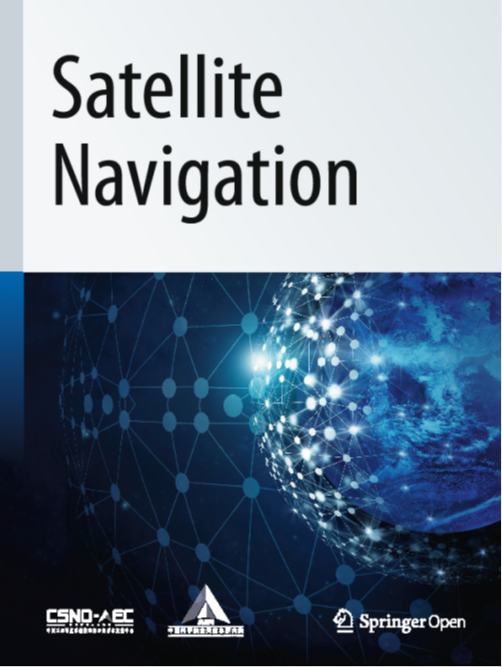High-precision GPS orbit determination by integrating the measurements from regional ground stations and LEO onboard receivers
IF 10.1
1区 地球科学
Q1 ENGINEERING, AEROSPACE
引用次数: 0
Abstract
High-precision Global Navigation Satellite System (GNSS) orbit and clock products are crucial for precise applications. An evenly distributed global network enables continuous tracking for GNSS satellites, while a regional network may result in tracking gaps in the areas where monitoring stations are not deployed. This also means that the orbit determination accuracy based on a regional network is not comparable to that with a global network. Integrating the measurements from regional ground stations and Low Earth Orbit (LEO) satellites onboard receivers is a potential approach for generating GNSS orbit and clock products with centimeter-level accuracy, which is particularly important for BDS and the local commercial providers relying on a regional network. In the integrated Precise Orbit Determination (POD), LEO satellites are used to compensate for the drawback of regional ground stations in the precise orbit and clock determination of GNSS satellites. To validate the role of LEO satellites in the orbit determination with a regional network, 6 International GNSS Service stations around China and 13 LEO satellites from January 20 to 26, 2019, including GRACE-C/D, SWARM-A/B/C, Jason-3, Sentinel-3A/B, and SAT-A/B/C/D/E are selected in this study to perform the integrated POD. The orbit and clock accuracies of GPS and LEO satellites are evaluated by comparison with precise products. The average Root Mean Square (RMS)of GPS orbit errors in the radial (R), along-track (T) and cross-track (N) directions are 2.27 cm, 3.45 cm, and 3.08 cm, respectively, and the clock accuracy is better than 0.15 ns based on a comparison with the final products provided by Center for Orbit Determination in Europe (CODE). The LEO orbit accuracy is better than 2 cm in the R direction, and the position errors are mostly within 4 cm. The results indicate that the integrated POD can generate high-precision orbit and clock products for GPS and LEO satellites based on regional network stations. Finally, the integrated POD products are assessed for Precise Point Positioning (PPP). Simulated kinematic PPP has a comparable performance in terms of the convergence time and positioning accuracy. With more LEO satellites available, the orbit and clock determination accuracy and PPP positioning accuracy can be improved.通过整合区域地面站和低地轨道机载接收器的测量结果确定高精度 GPS 轨道
高精度全球导航卫星系统(GNSS)轨道和时钟产品对精确应用至关重要。均匀分布的全球网络可对全球导航卫星系统卫星进行连续跟踪,而区域网络可能会在未部署监测站的地区造成跟踪空白。这也意味着基于区域网络的轨道确定精度无法与全球网络相比。将区域地面站和低地球轨道卫星机载接收器的测量结果进行整合是生成具有厘米级精度的全球导航卫星系统轨道和时钟产品的一种潜在方法,这对依赖区域网络的 BDS 和当地商业供应商尤为重要。在综合精确轨道确定(POD)中,低地轨道卫星用于弥补区域地面站在精确确定全球导航卫星系统卫星轨道和时钟方面的不足。为了验证低地轨道卫星在区域网络轨道测定中的作用,本研究选取了2019年1月20日至26日中国周边的6个国际GNSS服务站和13颗低地轨道卫星(包括GRACE-C/D、SWARM-A/B/C、Jason-3、Sentinel-3A/B和SAT-A/B/C/D/E)进行综合POD测定。通过与精确产品的比较,对 GPS 和低地轨道卫星的轨道和时钟精度进行了评估。根据与欧洲轨道测定中心(CODE)提供的最终产品的比较,GPS 轨道在径向(R)、沿轨(T)和跨轨(N)方向的平均均方根误差分别为 2.27 厘米、3.45 厘米和 3.08 厘米,时钟精度优于 0.15 ns。低地轨道的轨道精度在 R 方向优于 2 厘米,位置误差大多在 4 厘米以内。结果表明,综合 POD 可以根据区域网络站生成 GPS 和低地轨道卫星的高精度轨道和时钟产品。最后,对综合 POD 产品进行了精确点定位(PPP)评估。模拟运动学 PPP 在收敛时间和定位精度方面的性能相当。随着更多低地轨道卫星的出现,轨道和时钟确定精度以及 PPP 定位精度都可以得到提高。
本文章由计算机程序翻译,如有差异,请以英文原文为准。
求助全文
约1分钟内获得全文
求助全文
来源期刊

Satellite Navigation
Multiple-
CiteScore
19.40
自引率
6.20%
发文量
25
审稿时长
12 weeks
期刊介绍:
Satellite Navigation is dedicated to presenting innovative ideas, new findings, and advancements in the theoretical techniques and applications of satellite navigation. The journal actively invites original articles, reviews, and commentaries to contribute to the exploration and dissemination of knowledge in this field.
 求助内容:
求助内容: 应助结果提醒方式:
应助结果提醒方式:


